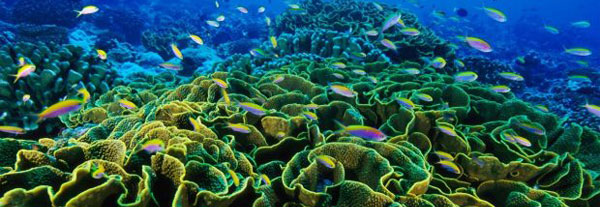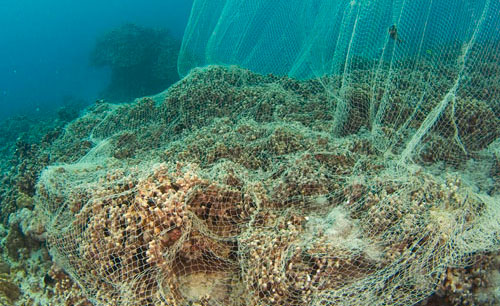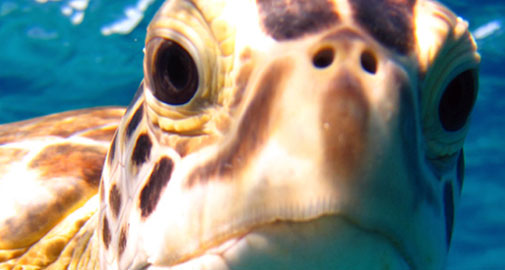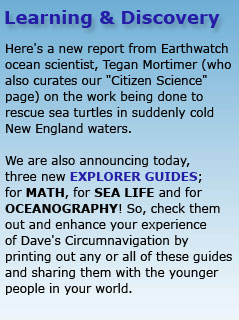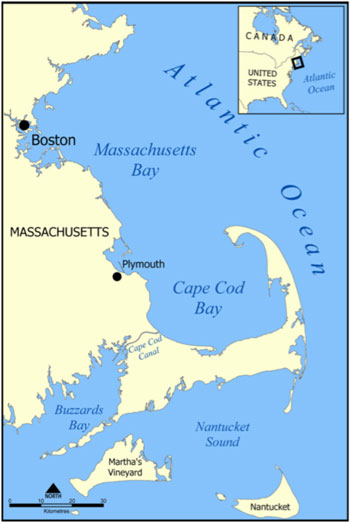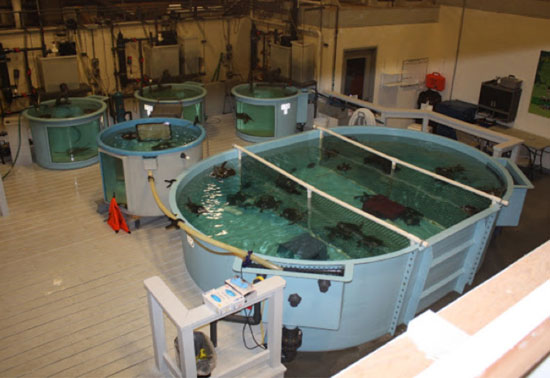This is the tenth in a series of “Science Notes” from from our ocean scientist colleague, Tegan Mortimer, who works with Earthwatch Institute. These postings follow from encounters with nature that I have on the water. Links to all her Science Notes can be on our Citizen-Science Resource Page. – DR
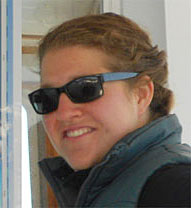 Like gigantic conveyor belts, the tropical oceans span the areas closer to the equator where water temperatures are over 75°. These warm and clear waters tend to have low levels of oxygen and nutrients, the opposite of the cold, nutrient rich waters I’ve written about in earlier Science Notes. This means that though tropical areas in general have low productivity, there are distinct ecosystems in tropical areas like coral reefs and mangroves that have very high productivity and are in fact, some of the most bio-diverse habitats on earth.
Like gigantic conveyor belts, the tropical oceans span the areas closer to the equator where water temperatures are over 75°. These warm and clear waters tend to have low levels of oxygen and nutrients, the opposite of the cold, nutrient rich waters I’ve written about in earlier Science Notes. This means that though tropical areas in general have low productivity, there are distinct ecosystems in tropical areas like coral reefs and mangroves that have very high productivity and are in fact, some of the most bio-diverse habitats on earth.
:: Coral Reefs: Gardens Under Siege
Despite the lack of nutrients and oxygen present in these warm waters, tropical areas play host to one of the most diverse ecosystems on earth: coral reefs.
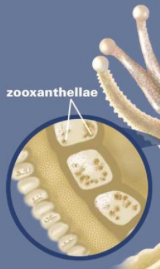 A coral reef is made up of many colonies of coral polyps which build the reef structure out of calcium carbonate. Tropical corals contain zooxanthellae, which is tiny algae that lives inside the coral where it photosynthesizes, creating food from sunlight. These algae are also what gives coral its brilliant and diverse colors. This means that coral can only occur in the “photic” zone, where sunlight penetrates the water. Corals polyps feed by extending stinging tentacles outwards to capture small prey and particles in the water column. Corals are related to other stinging animals including sea anemones and jellyfish.
A coral reef is made up of many colonies of coral polyps which build the reef structure out of calcium carbonate. Tropical corals contain zooxanthellae, which is tiny algae that lives inside the coral where it photosynthesizes, creating food from sunlight. These algae are also what gives coral its brilliant and diverse colors. This means that coral can only occur in the “photic” zone, where sunlight penetrates the water. Corals polyps feed by extending stinging tentacles outwards to capture small prey and particles in the water column. Corals are related to other stinging animals including sea anemones and jellyfish.
The complex physical structure of a coral reef, some of which are thousands of years old, creates an ideal habitat of many other animals to thrive – from small invertebrates to large animals like sea turtles and sharks. The productivity of many tropical marine areas as well as the related economic activities that center around fishing and tourism are highly dependent on the health of coral reefs.
In today’s changing ocean, coral reefs are under siege. Sea surface temperatures are increasing, atmospheric carbon dioxide is driving up ocean acidity, and overfishing is removing critical fish and invertebrate species at the same time that coastal land development is increasing in many coral reef areas. All of these pressures are contributing to the unprecedented and rapid collapse of coral reefs along with the loss of the unique ecosystem that goes with them. Scientists are racing to learn more about how these ecosystems are functioning under speedily changing conditions and how we might increase the resilience of corals, and help them cope better under a variety of different stressors.
Dr. Carrie Manfrino is an Earthwatch scientist studying just this area, but with an exciting twist called “coral gardening.” A great obstacle to coral resilience is that when large areas of corals disappear, it greatly reduces the ability of larvae to successfully settle in to form new baby corals in new areas. Staghorn and Elkhorn corals are branching corals which are a critical part of the coral ecosystem, but in the Caribbean these corals have decreased by as much as 90% in some areas, due to climate change and development pressures.
In the Cayman Islands, where Dr. Manfrino works, these corals are showing some very promising recovery, and her team is working to find out what characterizes sites where these corals are doing well. Once new sites are identified that match these characteristics, scientists and volunteers transfer baby corals that have been grown in a special coral “nursery” to these new sites. The idea behind this method is to both increase coral cover as well as to maintain islands of coral that are better connected with each other which help increase the production of new coral naturally. This is super exciting science, which is using a variety of new technologies to better understand and manage our impacts on the natural environment. (Here’s a video w/ Dr. Manfrino and her colleagues.)
:: Protecting Special Places
Just like anywhere on earth, special places need special protection. The unique biodiversities supported in tropical areas means that there are many special places in need of protection. This process is usually achieved through the creation of multi-nationally supported Marine Protected Areas or MPA. An MPA usually has one of two purposes, to protect an area that supports rare or important species, or to provide a refuge for animals from fishing. MPAs can vary in size from very small local protected areas to vast areas like those in the map below. The most important thing is that an MPA is large enough to matter and located in the right place so that it can provide the most benefit and achieve its purpose. The idea of designating marine areas to be protected is a relatively new one (2000) when compared to the creation of national parks, which started as early as 1872 with the creation of Yellowstone National Park in the U.S.
Currently just 1% of the ocean is fully protected.
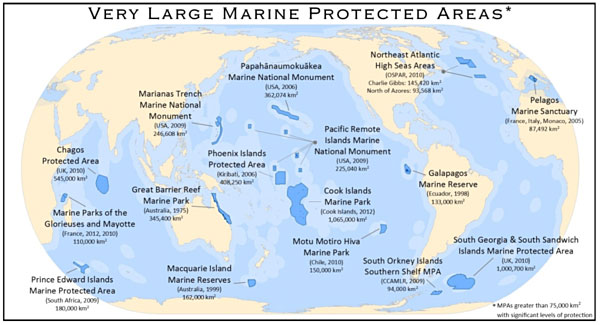
So that the right places can be protected, scientists are studying how different animals use their habitat. It is important to be able to know what places are used for feeding, breeding, and resting so that these important functions can be maintained.
On the Pacific coast of Costa Rica, in an area called Gulfo Dulche, Lenin Oviedo, an Earthwatch scientist, is conducting a research project to study how this pristine area is important to resident and migratory species of dolphins and whales. Bottlenose dolphins, Pantropical spotted dolphins, and humpback whales use this area either as their permanent home or as a way stop during larger migrations. Along with mapping how these different species use the gulf, the research team is interested in how boat traffic and boat noise overlaps with important whale and dolphin areas.
It is common that special places for animals are usually special places for humans too. Healthier ecosystems support the wildlife, which also benefits economic activities like fishing and tourism. It is important to understand how these activities impact the environment to see how they might be better managed.
Farther east in the Bahamas, Annabelle Brooks is another Earthwatch scientist whose research is in studying the spatial movements of juvenile green and hawksbill sea turtles. All species of sea turtle are endangered, so it is very important to protect areas, which are crucial for feeding. This research also allows the team to understand naturally occurring cycles of abundance and movement. As impacts from human activities and climate change become more widespread, this research allows scientists to spot disruptions, which are outside the naturally occurring changes in populations.
Researchers like Oviedo and Brooks use the power of computer modeling to better understand natural change and movement in populations. By combining observations of animals with data about the environment, they create a computer model that tells them which areas are important for specific animals or animal activities based on the environmental characteristics. Then the research team goes back into the field and collects more data which is used to validate the models, to see how good the models are at predicting observations in real life. This technique is very useful for pinpointing large areas that are important for specific animals. The aim of both these projects and many others like them is to better understand essential habitats for these important species so that we can better protect them in a changing ocean.
– Tegan Mortimer <teg.mortimerATgmailDOTcom>

